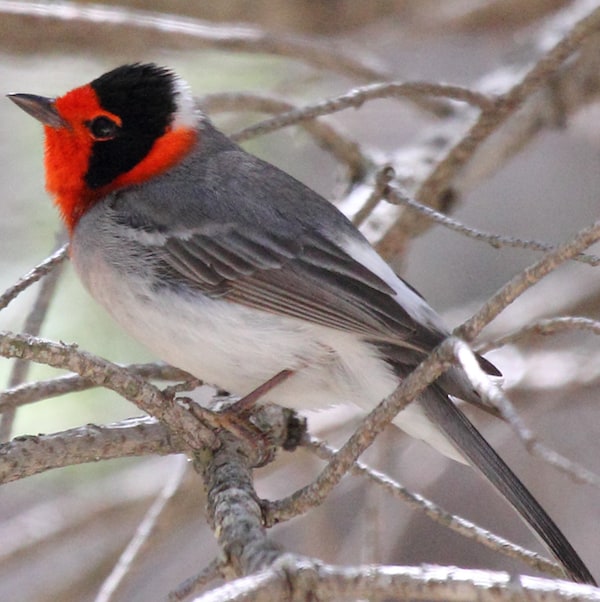
Look For
The rose-breasted grosbeak is a songbird of eastern deciduous woodlands. In flight, male rose-breasteds flash a pinwheel of black and white, and if you look carefully and closely, you’ll see that both sexes have salmon-pink in the “armpit” region under their wings. Females and young males are streaky. The fall and winter adult male wears a faded, splotchy version of the breeding plumage. They are 7-8 inches long.
Listen For
Spending much of its time in the treetops, the beautiful male rose-breasted is often heard before it is seen. The rich melodic warbling song of the rose-breasted grosbeak is often described as sounding like a robin that’s had singing lessons. When not singing, rose-breasteds often utter a call that sounds like a very squeaky eeek!
Find It
The rose-breasted grosbeak prefers young, open deciduous woods during spring and summer. It often forages in thick foliage near the treetops and can be best located by song or call note. In migration, it can appear almost anywhere.
Feeding Behavior
Rose-breasted grosbeaks eat insects, seeds, and fruits. Although mostly gathering and picking food off of plants and thick branches, they will also grab for insects in midair. The insects that they eat include various types of butterflies, moths, beetles, ants, and bees.
Nesting Behavior
The typical nesting sight for a rose-breasted is a fork in a sapling or crotch of a tree. The male will help the female choose before construction of the nest begins. Using twigs from maple, elder, and spruce trees, the rose-breasted will construct a famously thin nest in which it is usually possible to see the eggs from the outside.
Wow!
In spring migration, rose-breasted grosbeaks often show up at bird feeders where sunflower seed is offered, sometimes prompting a “Wow! What’s that bird?”





I have just spotted on my feeder in Topeka KS
I believe this is a Rose-breasted Grosbeak!
Hello, Connie! You’ve identified the bird correctly—it’s a male rose-breasted grosbeak. Happy birding :)
https://uploads.disquscdn.com/images/02fe9a3a0f09c991d55016f5c995af3b56698e2ecbd3fe154512124974929164.jpg
We had 2 Grosbeaks visit my feeder in Kutztown, PA.